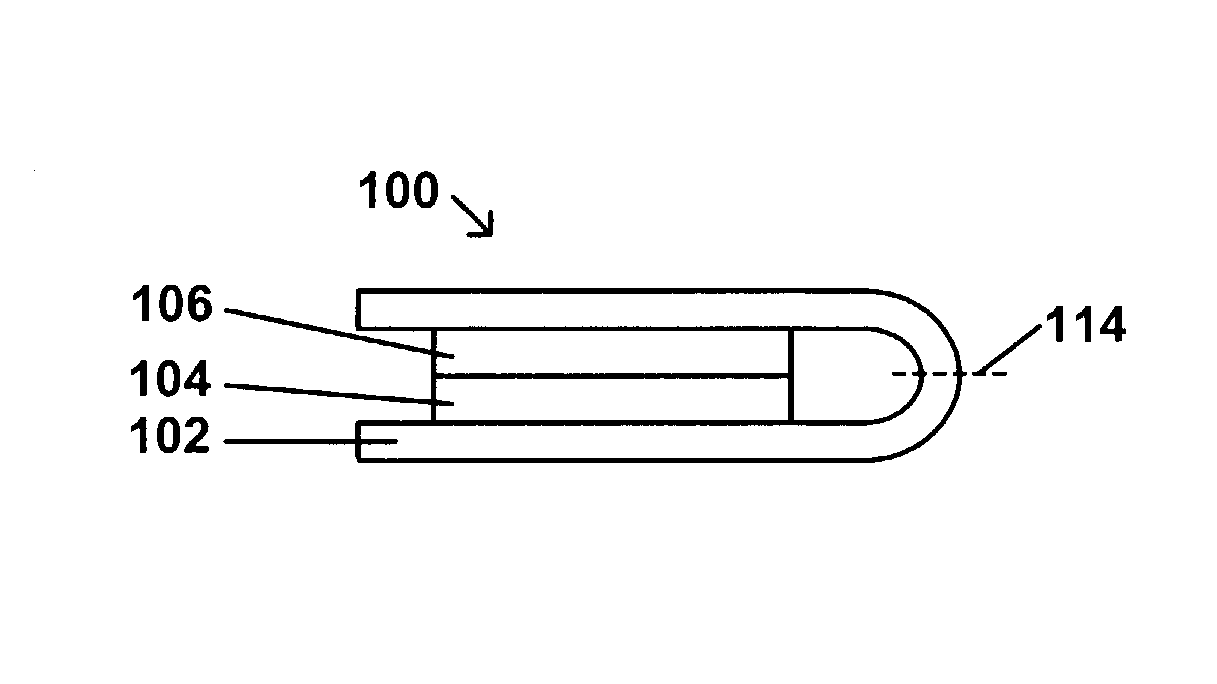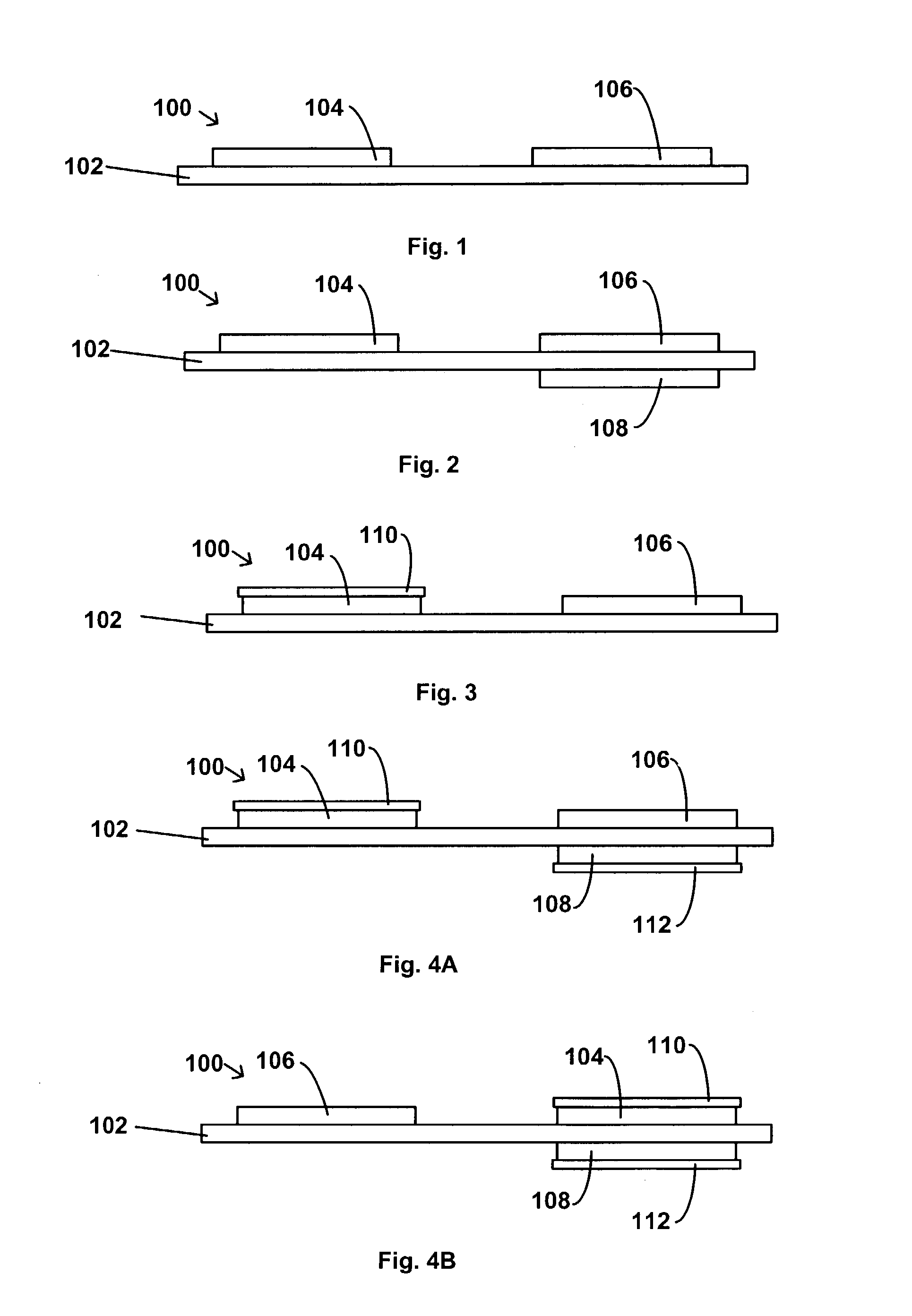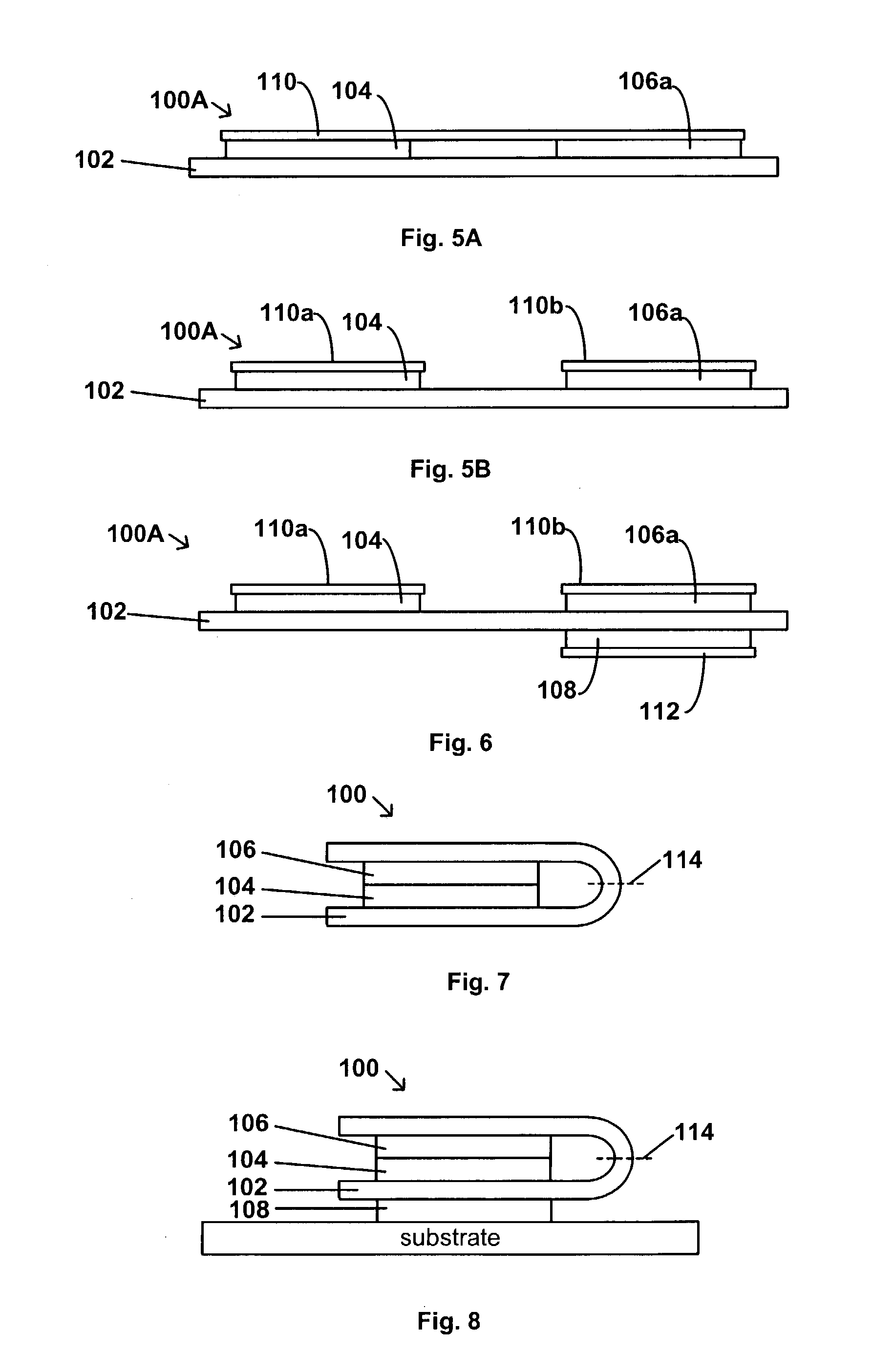Color changing device for time indicating label and methods of making and using the same
- Summary
- Abstract
- Description
- Claims
- Application Information
AI Technical Summary
Benefits of technology
Problems solved by technology
Method used
Image
Examples
example a-1
[0093]Example A-1 provides examples of the preparation of acrylic emulsion pressure sensitive adhesives suitable for use in the present invention.
[0094]The following synthetic protocol was used for the synthesis of an AMMPAS pressure sensitive adhesive (the quantities of monomers used in the following are varied in various samples below, but the procedure is the same):
[0095]Using a mixture of monomers comprising 46.88% by weight iso-octyl acrylate (IOA), 37.5% butyl acrylate (BA), 3.13% MMA (methyl methacrylate), 5.31% acrylic acid (AA), 6.25% 2-acrylamido-2-methyl-l-propanesulfonic acid (AMMPAS), and 0.93% 2,2′-azobisisobutyronitrile (AIBN), an acrylic copolymer was prepared by solution polymerization in a mixture of ethyl acetate and ethanol (weight ratio 36 / 24), using 0.93% by weight (based on the weight of monomers) of AIBN as an initiator. Monomeric AMMPAS was mixed with ethanol (solution A), and the solution A was stirred to get a clear solution. Other monomers and the initiat...
example a-2
[0098]A monomer mixture is made up by mixing 216.3 g. of 2-ethyl hexyl acrylate, 40.76 g of methyl acrylate, 0.32 g. of glycidyl methacrylate, 38.04 g of N-vinyl pyrrolidone and 22.05 g of acrylic acid. A portion of (79.37 g) of this mixture is introduced to a 2-liter reactor equipped with a pitched turbine agitator, a reflux condenser and a thermistor. Also, 34.4 g. of ethyl acetate and 39.4 g of hexane are added to the reactor. The contents of the reactor are heated to reflux and 0.12 g of Vazo 64, are manufactured and sold by DuPont in 5.0 g of ethyl acetate is added. After vigorous reflux started in a short time and the contents of the reactor are held for 5 minutes. At this time, the remaining monomers are mixed with 268.6 g. of ethyl acetate, 37.6 g. of hexane and 0.35 g. of Vazo 64 and are added as a single feed mixture over 3.5 hrs. All through the feed, temperature is maintained to keep reactor contents under reflux. One hour after end of feed, 0.17 g. Vazo 64 is added in 5...
example a-3
[0099]A pressure sensitive adhesive is prepared as described in Example A-2 except isooctyl acrylate is used in place of 2-ethylhexyl acrylate.
[0100]The following Table 2 contains further examples of adhesives. The following examples follow the same procedure of Example A-2. The amount of materials is parts by weight. In the table, NVP refers to N-vinyl pyrrolidone; MeA refers to methyl acrylate; GMA refers to glycidyl methacrylate; AA refers to acrylic acid; and 2-EHA refers to 2-ethylhexyl acrylate.
[0101]
TABLE 2ExampleNVPMeAGMAAA2-EHAA-3 30——3.067.0A-4 1212.80.16.968.2A-5 1212.9—6.968.2A-6 12—0.16.981A-7 1212.60.36.968.2A-8 12—0.36.980.8A-9 1240.36.976.8A-101280.36.972.8A-111212.80.33.671.3A-121212.80.36.968A-131013.60.3769.1A-1410100.3772.7A-1510120.3770.7A-167.916.60.3768.2A-177.916.60.36.968.3A-187.916.90.16.968.2A-197.912.80.3772A-20812.80.33.675.3
[0102]The pressure sensitive adhesives of the present invention exhibit good adhesion to low-energy surfaces. The pressure sensitiv...
PUM
 Login to View More
Login to View More Abstract
Description
Claims
Application Information
 Login to View More
Login to View More - R&D
- Intellectual Property
- Life Sciences
- Materials
- Tech Scout
- Unparalleled Data Quality
- Higher Quality Content
- 60% Fewer Hallucinations
Browse by: Latest US Patents, China's latest patents, Technical Efficacy Thesaurus, Application Domain, Technology Topic, Popular Technical Reports.
© 2025 PatSnap. All rights reserved.Legal|Privacy policy|Modern Slavery Act Transparency Statement|Sitemap|About US| Contact US: help@patsnap.com



